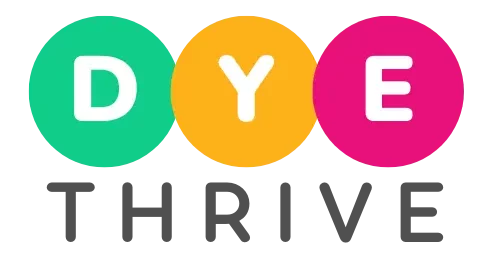Batik and tie dye are popular decorative techniques that involve applying wax or tying knots on fabric to create beautiful patterns and designs.
The dye adheres to the untreated sections of the fabric, leaving the waxed or tied sections the original color.
Choosing the right type of fabric is crucial for achieving good results with these techniques. The fabric needs to properly absorb the dye while holding the patterns clearly.
This article discusses the top 10 fabrics best suited for batik and tie dye based on their dye absorbency, durability, washability, and ability to hold colorful designs.
Understanding the advantages and disadvantages of each fabric will help crafters select the right textile for their specific project and skill level.
What Is Batik Technique and What It Is Used For
Batik is a technique of wax-resist dyeing applied to whole cloth. It originated many centuries ago on the island of Java, Indonesia.
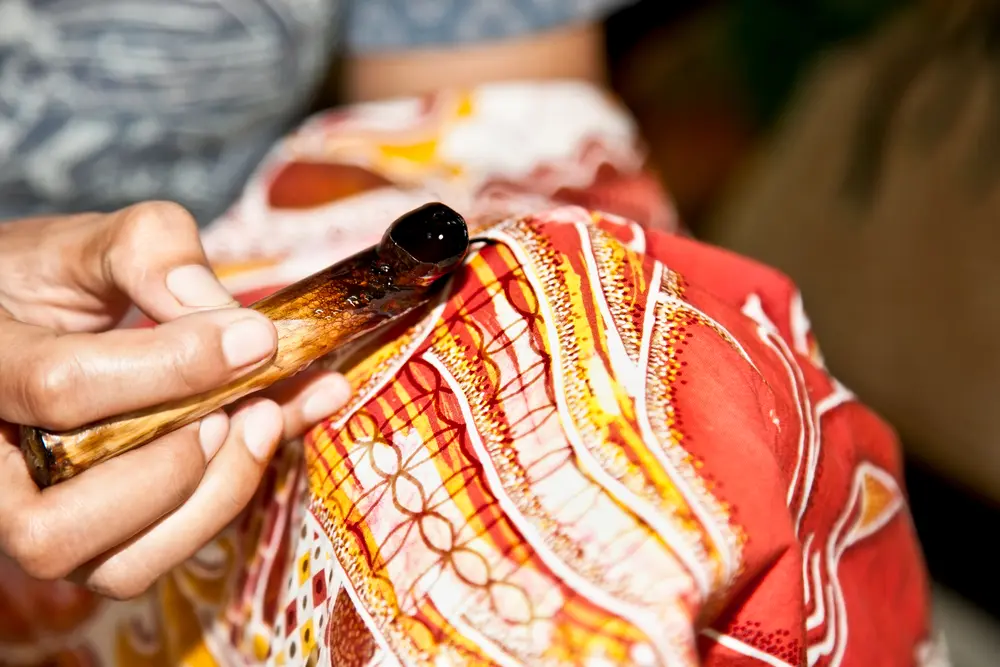
Batik fabric is made using this traditional technique of wax-resisting dye.
The process involves drawing patterns on cloth using wax, then dyeing the fabric.
The wax resists the dye and allows the pattern to remain its original color. After dying, the wax is removed leaving the pattern visible.
What is Batik Fabric Used For?
Batik fabric is used for:
So, batik fabric offers beautiful colorful patterns that work well for clothing, home decor, quilting, crafts, artwork and accessories. The hand-dyed artisanal look and feel of batik fabric make it a versatile choice for many textile uses.
List Of 10 Suitable Fabrics for Batik & Tie Dye
Here is a list of the 10 best fabrics for batic that you can consider
1. Cotton
Cotton is the most commonly used fabric for batik and tie-dye. It is a natural fiber fabric made from the fibers surrounding the seeds of the cotton plant.
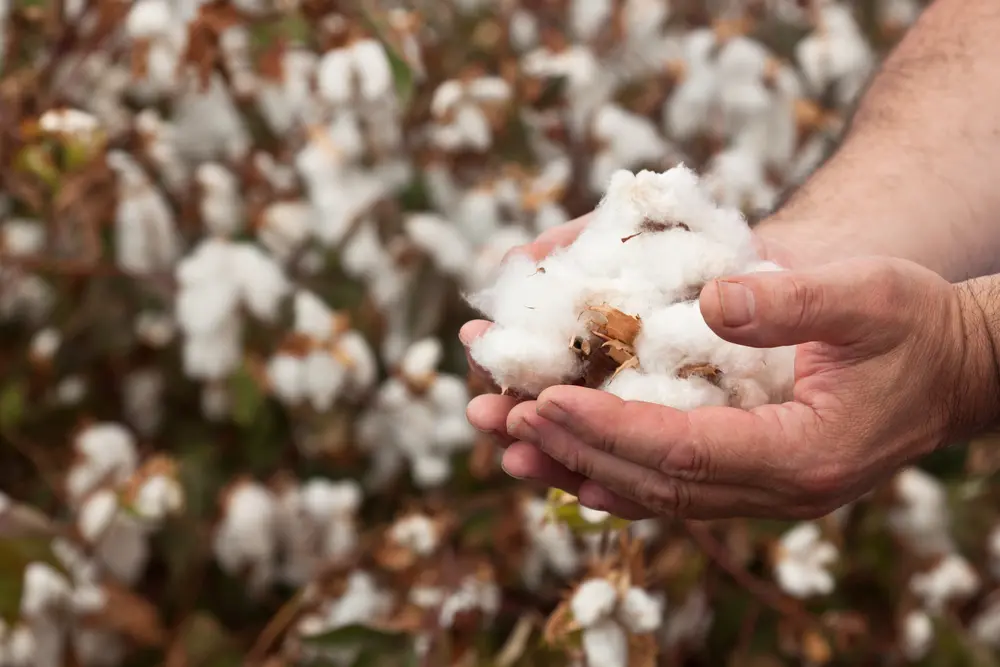
Cotton is highly absorbent, breathable, comfortable to wear, and affordable. It soaks up dye readily and produces vivid, wash-fast colors that remain vibrant even after repeated laundering.
– Cotton Properties and Characteristics
- High absorbency
- Durable and strong when wet
- Vibrant, colorfast results
- Soft, breathable, and comfortable
- Affordable and accessible
– Advantages of Cotton
- Ideal for beginners
- Allows vivid colors
- Durable through repeated washings
- Versatile with many types of cotton fabric
– Disadvantages of Cotton
- Lacks drape and sheen of silk
- Needs 100% cotton for best dye absorption
2. Rayon & Viscose
Rayon and viscose fabrics are regenerated cellulose fibers derived from plants like bamboo, soy, and wood pulp.
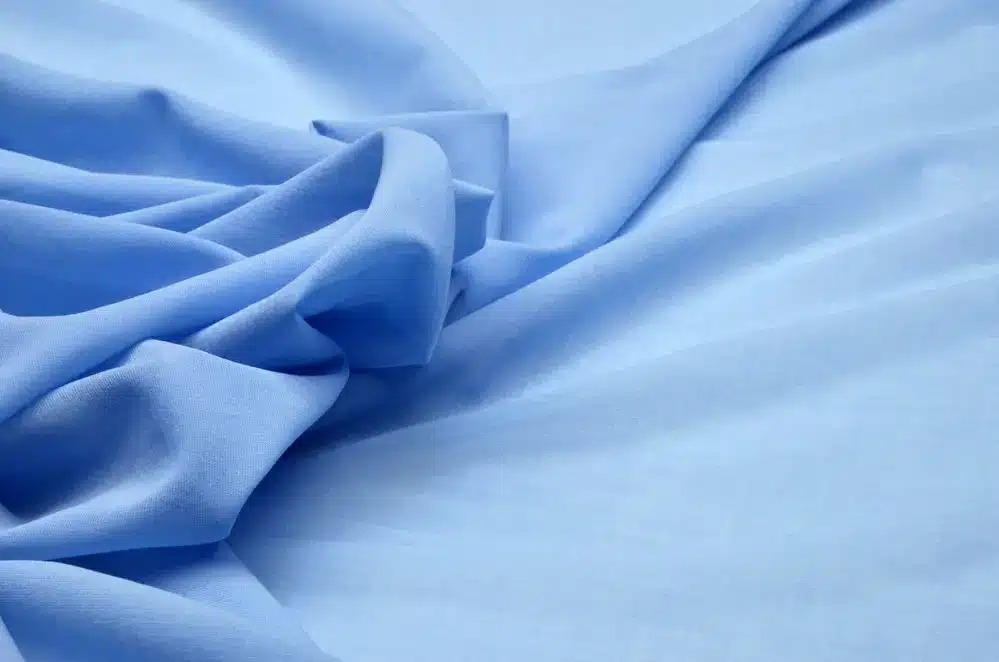
They absorb dye similarly to cotton, making them another excellent choice for batik and tie-dye. Rayon and viscose take to color quickly and produce stunning patterns with deep saturation.
The fabrics have a lovely sheen and luxurious drape that cotton lacks. They are more affordable than silk and can substitute for expensive fiber.
– Rayon & Viscose Properties
- Absorb dye readily
- Produce vivid, saturated colors
- Have a beautiful drape and sheen
- More affordable substitute to silk
– Advantages of Rayon & Viscose
- Dye absorbency similar to cotton
- Create stunning dye patterns and colors
- Luxurious look and feel
- Cost-effective alternative to silk
– Disadvantages of Rayon & Viscose
- Weaker and more delicate when wet
- Requires gentler dye formulas and handling
- Colors may fade faster than cotton
- Harmful chemicals are used in the production
3. Silk
Silk is one of the most luxurious fabrics for batik and tie dye capable of yielding brilliant colors and artistic designs.
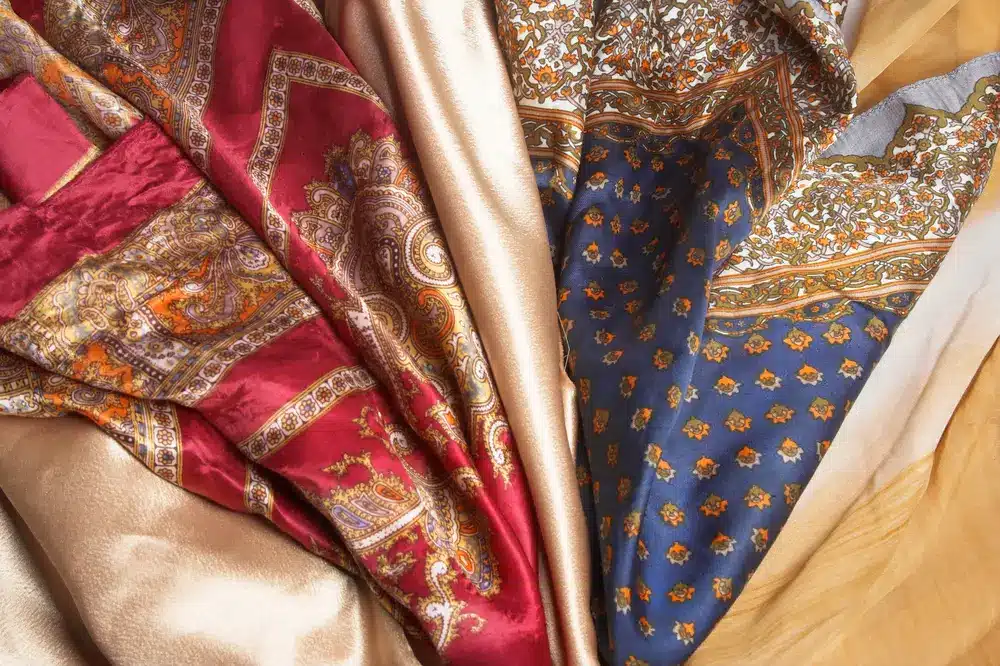
Silk is extremely absorbent allowing dyes to permeate the fibers exceptionally well. The patterns dyed on silk come out sharp, vivid, and lustrous.
The natural protein fibers give the fabric a beautiful sheen and soft, flowing drape. However, silk is more delicate compared to cotton and needs gentle handling and washing.
– Silk Properties
- Extremely absorbent and takes dye readily
- Produces sharp, vivid, lustrous patterns
- Has a beautiful sheen and fluid drape
- Luxurious, expensive fabric
– Advantages of Silk
- Yields exceptionally brilliant, vivid colors
- Displays artistic, lustrous patterns
- Gorgeous sheen and fluid drape
– Disadvantages of Silk
- More delicate and requires gentle handling
- Expensive compared to cotton and other fabrics
- Needs special dyes and washing care
4. Hemp
Hemp is a sustainable and durable fiber crop that makes a good batik and tie dye fabric. It has a coarse, textured weave that absorbs dye readily.
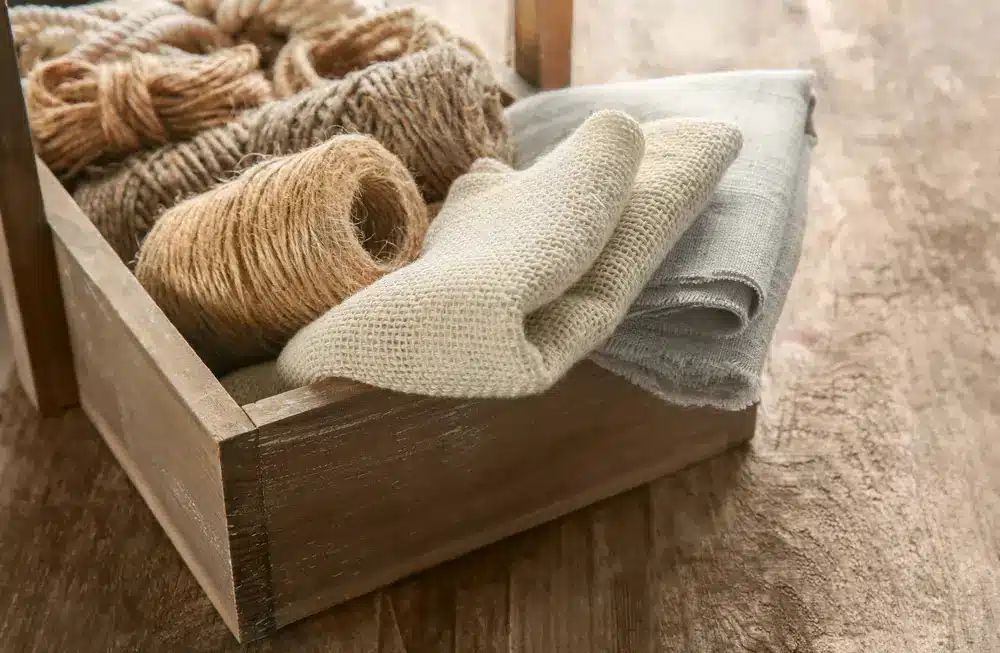
Hemp holds color well and becomes softer over time with each wash. It is stronger than cotton when wet so can withstand repeated dye applications.
The natural off-white color of hemp gives batik projects an organic, rustic feel. Hemp-cotton blends provide a nice compromise of hemp’s durability and cotton’s dye absorbency.
– Hemp Properties
- Coarse, textured weave
- Absorbs dye well
- Durable and colorfast
- Has natural off-white color
– Advantages of Hemp
- Sustainable and durable
- Withstands repeated dyeing
- Colorfast and softens over time
- Provides an organic, rustic look
– Disadvantages of Hemp
- Coarseness may not suit all tastes
- May require blending with cotton for the best results
5. Linen
Linen is a bast fiber fabric made from the flax plant that has been used for centuries in textiles. Its absorbent fibers allow dyes to spread and penetrate evenly.
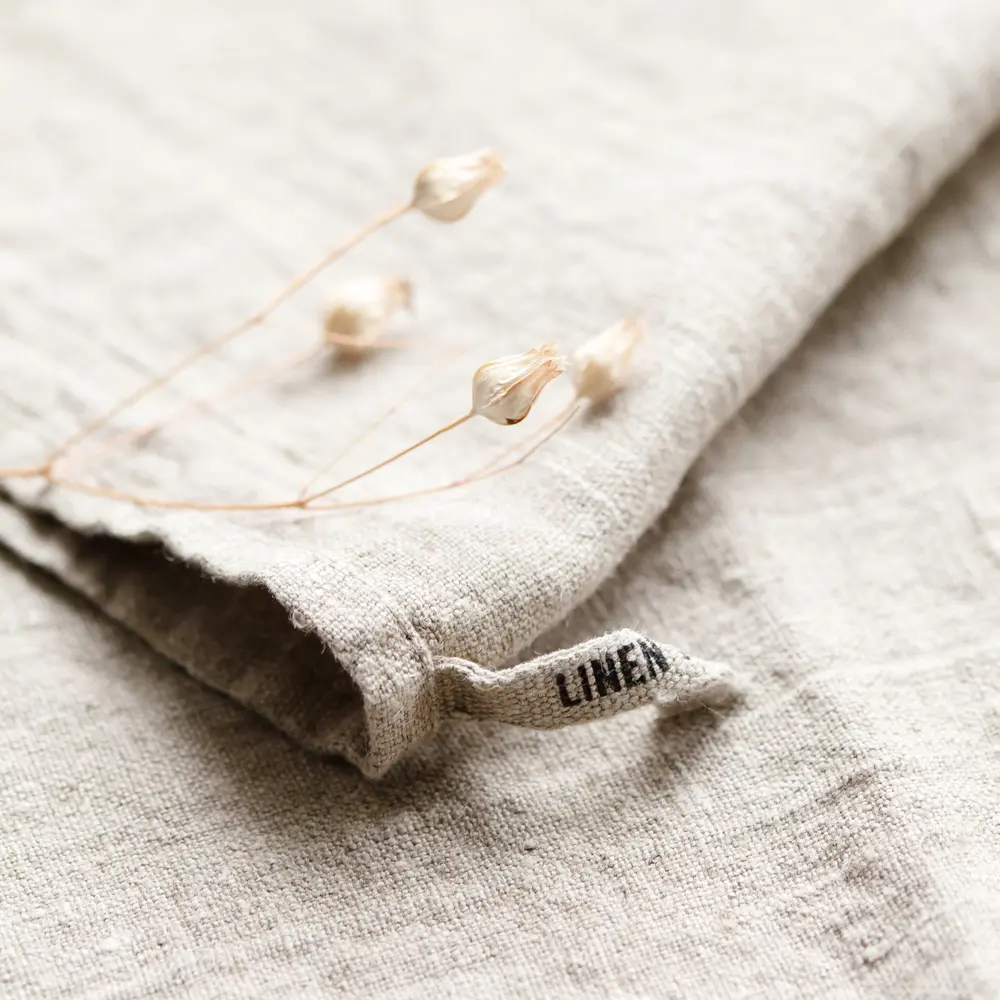
Linen displays batik designs with soft, blurred edges that look washed out and vintage. The fabric has a nice drape and gets softer over time. However, linen wrinkles easily.
It benefits from being pre-washed and ironed before starting a batik or tie dye project. Linen also requires extra dye solution or repeat applications to achieve bold colors.
– Linen Properties
- Absorbent bast fibers
- Soft, blurred pattern edges
- Lovely drape that improves over time
- Prone to wrinkling
– Advantages of Linen
- Allows dyes to spread evenly
- Creates the soft, vintage look
- Has a beautiful drape that increases with the use
– Disadvantages of Linen
- Wrinkles easily
- May need pre-washing and ironing
- Requires more dye for bold colors
6. Modal & Tencel
Modal and Tencel are soft, silky fabrics produced from renewable wood cellulose. Their high absorbency and smooth surfaces make them suitable for batik and tie dye.
Made using environmentally friendly processes, these fabrics display and hold colors vividly with brilliant patterns. They have a luxurious feel and beautiful drape.
However, modal and Tencel are weaker when wet. Gentle dye formulas and handling are needed to prevent damage. They are also more expensive than cotton.
– Modal & Tencel Properties
- Highly absorbent
- Smooth surfaces
- Environmentally friendly
- Luxurious feel and drape
– Advantages of Modal & Tencel
- Sustainable and eco-friendly
- Yield brilliant, vivid dyed patterns
- Have a luxurious look and feel
- Good alternative to silk
– Disadvantages of Modal & Tencel
- Weak and prone to damage when wet
- Require gentle dyes and handling
- More expensive than cotton
7. Polyester & Nylon
Polyester and nylon fabrics require special union dye or disperse dye formulas. But when dyed correctly, they will yield bright, vivid colors that do not fade or bleed easily.
Polyester and nylon are quick-drying, wrinkle-resistant, and highly durable. This makes the fabric colors last longer and holds up well to repeated washing.
Synthetic fibers do not absorb dyes readily compared to natural fabrics. Using higher temperatures allows better dye penetration and adhesion.
– Polyester & Nylon Properties
- Require special dyes
- Yield vivid, colorfast results
- Quick drying and wrinkle resistant
- Highly durable and washable
– Advantages of Polyester & Nylon
- Colors don’t fade or bleed
- Perfect for repeat washing
- Dye fastness and durability
- Easy care and wrinkle resistance
– Disadvantages of Polyester & Nylon
- Doesn’t absorb dye readily
- Requires high heat for dyeing
- Lacks absorbency of natural fibers
8. Cheesecloth/Muslin
Loosely woven fabrics like cheesecloth and muslin are ideal choices for beginners learning batik or tie-dye. The light, open weaves rapidly soak up dye solutions for fast, all-over color.
With practice controlling the dye flow, beautiful blurred patterns can be created. These inexpensive fabrics also work well for test batches before dyeing a more expensive material.
However, the loose weave can make it tricky to get sharp patterns. Thick dye mixtures may bleed through.
– Cheesecloth/Muslin Properties
- Light, open and loose weaves
- Rapidly absorb dyes
- Inexpensive and accessible
- Allows blurred dye patterns
– Advantages of Cheesecloth/Muslin
- Perfect for beginners
- Allows creative blurred patterns
- Inexpensive test fabric
- Fast dye absorption
– Disadvantages of Cheesecloth/Muslin
- Loose weave makes sharp designs tricky
- Prone to dye bleeding through
- Less durable than other fabrics
9. Wool
Wool is a natural fiber fabric that can be used for batik, though it requires some special handling. Wool fiber absorbs dye readily and holds bright colors well when dyed at proper temperatures. It works best for batik using cold dye formulas.
– Wool Properties
- Absorbs and holds dye colors well
- Natural fiber with nice texture
- Insulating and moisture wicking
– Advantages of Wool
- Takes to dyes and creates vivid colors
- Durable and long-lasting fabric
- Naturally resists wrinkles
– Disadvantages of Wool
- Can felt or shrink if washed improperly
- Requires cold dye formulas
- Wool allergies may be an issue for some
10. Bamboo
Bamboo fabric made from bamboo pulp has become popular for batik. Bamboo viscose or rayon absorb dyes quickly and allow vivid patterns. Bamboo tends to be very soft and comfortable to wear. It is often blended with cotton for batik.
– Bamboo Properties
- Absorbs dye readily when made into viscose/rayon
- Very soft and comfortable fabric
- Frequently blended with cotton
– Advantages of Bamboo
- Rayon form takes dye very well
- Soft, breathable comfort
- Easily blended with fabrics like cotton
– Disadvantages of Bamboo
- Bamboo rayon can be delicate
- Prone to shrinkage unless pre-treated
- Wrinkles easily unless blended
FAQ – Batik Suitable Fabrics For Dyeing
1. What Kind Of Fabric Is Used For Batik?
The most common fabric used for batik is 100% cotton such as broadcloth, muslin, or even t-shirts. Cotton works well because it absorbs dye readily and produces vivid colors. Other natural fiber fabrics like silk, rayon, linen, and hemp can also be used for batik, but require more care. Synthetic fabrics like polyester require special dyes.
2. Can You Use Batiks With Other Fabrics?
Yes, batik fabrics can be combined with other fabrics in sewing and quilting projects.
Batik cottons pair well with solids, prints, voiles, linens, and more. Using batiks together with complementary fabrics can create beautiful contrast and interest. Just ensure any non-batik fabrics hold up to the wash process.
3. Is Batik Hard To Sew?
Batik fabric is generally not difficult to sew as long as you have a sharp needle and use polyester thread. Because it is hand dyed, batik fabric has slight slubs and irregularities that polyester thread can stretch over better than cotton. Use a size 70/10 or 80/12 needle for best results.
4. Is Batik 100 Cotton?
Traditional batik uses 100% cotton fabric because cotton absorbs the dye best. But modern batik style fabrics can contain rayon, silk, or polyester blends. Always check the fabric content before purchasing batik fabric if you need pure cotton.
5. Can You Use Any Wax For Batik
No, you want to use a wax specifically made for batik resist work. Paraffin wax works well. Beeswax can create problems washing out the wax. Avoid candle wax, as it may contain colorants and fragrances. The wax should have a low melting point for batik work but still resist dye penetration
Conclusion
The fabric chosen for batik or tie dye has a big impact on the dye absorption, finished look, and durability of the patterns. When selected carefully, many fabrics like cotton, silk, linen, and rayon can yield stunning results.
Beginners may want to start with versatile cotton. More delicate fabrics require extra care when dyeing and handling. With some testing and preparation, craftsmen can create dazzling batik or tie dye projects on their fabric of choice.
The endless color combinations possible with different textiles provide endless opportunities for creativity and self-expression.
